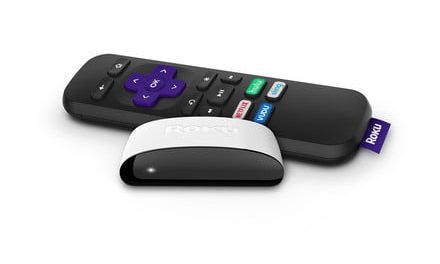How can managed service providers generate leads?
It’s a big question – but it’s important to get right, because leads are key to business growth. With that in mind, we’re putting our extensive B2B tech marketing background to work to answer it correctly. Because, admittedly, there’s a lot of noise out there.
Here’s how we’ve helped MSPs build consistent lead generation machines to keep new business coming in:
Define the audience.
Refine the message.
Make the website work.
Build intelligent paid ad campaigns.
Create impactful content.
It’s worth noting that these pieces should (almost always) be completed sequentially – so you wouldn’t be able to, for instance, “create impactful content” before “defining the audience”.
Okay – let’s dive in.
1. Define the audience.
Defining the audience is foundational to the success of any marketing campaign, and that certainly holds true for lead generation efforts.
It seems obvious, but poorly-defined audiences are actually all-too-common. For instance, we’ve worked with a provider that had a great IT service product for businesses above 20 workstations – yet their marketing communicated that they were a generalist. Consequently, their sales team spent a lot of time dealing with non-fits, or mom-and-pop shops that were too small to afford them.
By defining the audience, you can ensure the leads you’ll generate will actually have buying interest.
This starts on a company level. For managed service providers, there are generally three potential methods of audience targeting:
Location. It’s okay to be a generalist if you’re focused on a certain location. Target and speak to the business community in your location, and you’ll be able to make an impact.
Business size. Some managed service providers, for example, may only want to target businesses with between 100 and 200 workstations. There may be enough similarities in needs and service offerings in this context to justify a broad industry target if sizing is consistent.
Business / industry type. I’d argue that this is better than pure size for targeting purposes, simply because needs tend to vary across industry (and even if they’re similar, the language in which they’re expressed changes). This might mean focusing on managed services for healthcare practices, or specialized manufacturing, etc.
With a company target in mind, the next step is to hone in on the individual buyer personas that would be involved in the sale.
For instance, MSPs targeting mid-level businesses might sell to Chief Technology Officers, while providers targeting smaller businesses would probably target the owner. While you’ll probably have a pretty good idea of who you’ll typically be dealing with just given the nature of the company, the best way to verify this kind of buyer data will be through research.
2. Refine the message.
Okay, so you’ve got an audience identified. Now, it’s time to put that target to use by refining your message so that it best speaks to them.
For managed services providers, this is where you start to identify the unique needs your audience faces. If they’re healthcare providers, could you speak to HIPAA compliance? If they’re in retail, should you speak to protection from data breaches?
There are a variety of tools to help you work through this; at New North, we like Hubspot’s Buyer Persona questions, the Storybrand framework, and the Empathy Map. Basically, these are scripted questions or narrative formats that help you to identify pain points and the true value in your service.
No matter what you use, though, the end results should be:
You’re able to communicate the problem, solution, and value that your service addresses in three to five sentences.
You have a clear and effective unique selling proposition.
Your message is in the language of your target audience – not just in the language of managed service providers. This means that you’ve avoided jargon.
3. Make the website work.
From a high level, defining your audience and refining your message should give you confidence in your strategic direction. The next step is to put it all to use on your website.
We view the website as the hub of your marketing and lead generation efforts. In fact, every other channel – from email to SEO to social media to paid campaigns – should revolve around your website, both in terms of messaging and in terms of driving attention, because the website is the key mechanism in showcasing your business to potential clients.
Your website’s goals should be to generate relevant traffic and convert visitors into high-value contacts.
To those ends, your website should have:
Consistent, refined messaging.
Clear explanations of your services (both in terms of technology and processes).
Pricing. Some businesses are still hesitant, but we recommend showing at least a general idea of pricing upfront; it lays a foundation for sales conversations and helps to qualify potential leads.
Case studies and/or testimonials to provide validation of your expertise.
Clear calls-to-action for prospects to begin sales conversations (i.e. “Get a Free Consult”).
Clear calls-to-action to build email lists (whether through content offerings or newsletter signups – and ideally through both).
A blog. This will be the engine behind content across platforms and a key to demonstrating expertise.
This is just the beginning; there are plenty of other things that can be effective on your website. But if you start with these, you’ll be on the right track.
4. Build intelligent paid ad campaigns.
Here’s the reality: if you’re looking to get your lead generation campaign started, paid ad campaigns are the go-to.
Years ago, we used to focus primarily on organic lead generation campaigns. We’d prioritize SEO, focus on getting our clients to rank for high-volume keywords relevant to their audience (say, “Managed IT service providers in DC”), and dedicate the vast majority of our efforts to making it happen.
The problem is that making organic results happen takes time. SEO is a great method for generating leads, but it’s almost always a long-term play. Same with organic social campaigns. Most companies can’t afford to wait six months for leads; they need them to start flowing quickly.
That’s why paid campaigns are so useful. They’re basically a shortcut to the front of the line when it comes to getting a prospect’s attention. And, if they’re targeted well, paid ads can meet people with a service offering right when they’re looking to fill that need.
The result is high-quality, relevant traffic to the website – which, as we’ve discussed, has hopefully been built to convert those visitors into leads.
I’d recommend getting started with a Google Ads campaign first. The power of Google Ads is that you can reach people literally as they’re searching for your service, which means they’ll be particularly open to buying.
Paid social can be incredibly effective, too. But it’s generally best at entering people into the higher stages of your lead funnel (by facilitating signups to a webinar or content piece, for example, versus dropping them directly into a service consult).
5. Create impactful content.
If a paid campaign is the starter for a lead generation campaign, consistent content is the fuel. There are plenty of directions you can take this, but here’s what we recommend:
Start with the blog. Your managed service provider blog should be the engine for lead generation content on other channels. Use quick excerpts from posts for social content. Create email content based on top performing posts. Build topic clusters that boost SEO results. As you create content here, it’ll naturally spill over into other channels.
Focus on the right social channels, not on every channel. Don’t get overwhelmed by trying to nail Facebook, Instagram, Twitter, YouTube, and a podcast all at once. Start by identifying the channels that’ll be most impactful, and use them to build out success to other channels. In other words, find out where your audience is listening, and speak to them there. For managed service providers, I’d recommend LinkedIn first, then Facebook and Twitter next.
Do email. Build your list, and put it to use. Email is still one of the best digital marketing channels because it’s cost-effective and highly-targeted. Newsletters can be build from blog content. Nurture campaigns can be used to transition contacts into leads. The world of B2B email marketing is deep – get a fuller picture of it here.
Be consistent. Look, I get it – everyone wants results, fast. But the reality is that almost anything of lasting value takes time to build, and although it may not seem like it, the same thing’s true of digital marketing for managed service providers. Don’t give up on content production after a few weeks. Commit to making it happen over time (I’d recommend at least a year), and the results will start to build. That’s not to say that you shouldn’t constantly evaluate whether you’re pursuing the right activities, but it is to say that consistency wins the day, even in a digital world.
If you consistently create impactful content on the right channels, the leads will come.
Read more: feedproxy.google.com






Recent Comments